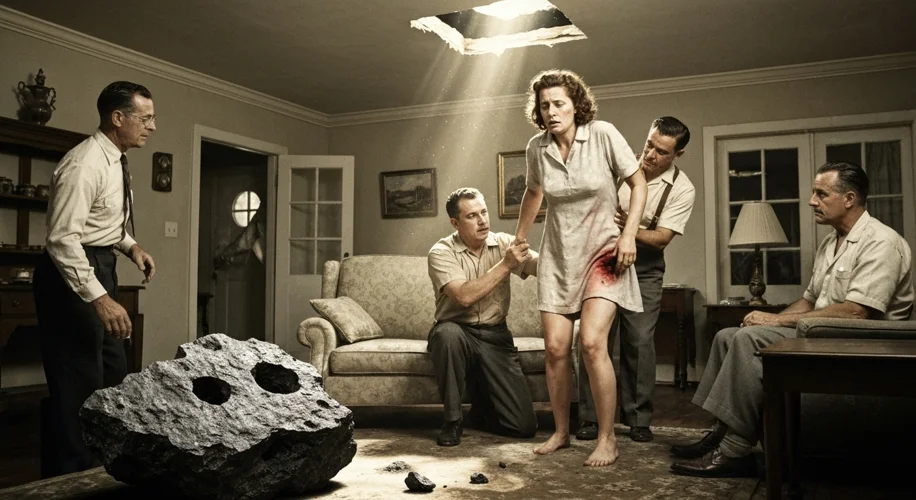The year is 1954. The place, Sylacauga, Alabama. For most, it was just another mundane Tuesday, March 18th. But for Ann Elizabeth Hodges, a 31-year-old woman enjoying a nap in her living room, it was the day her life became indelibly linked to the cosmos.
Ann was a typical young wife and mother, living a quiet life in the heart of the American South. Her days were filled with the ordinary rhythms of domesticity, a stark contrast to the extraordinary event that was about to redefine her existence. On that fateful afternoon, a fiery object, a meteorite, made a dramatic, unannounced descent from the heavens, piercing the roof of her modest home and striking her directly.

The object, later identified as a chondrite meteorite weighing approximately 8.5 pounds, had embarked on a journey spanning millions of years and countless miles. It had traveled through the vacuum of space, a silent, ancient traveler, before its fiery descent through Earth’s atmosphere. The meteorite, burning intensely, broke apart in the atmosphere, with the main fragment making its way to Ann’s home.
Upon impact, Ann was knocked unconscious, waking to a searing pain in her hip and side. Her neighbors, alerted by the commotion and the thud, rushed to her aid, discovering the unusual circumstances. The small, dark, stony mass lay beside her, a tangible piece of extraterrestrial reality embedded in the fabric of her everyday life.
News of the event spread like wildfire, attracting intense media attention. Ann Hodges became an overnight sensation, the first documented human to be directly struck by a meteorite. Reporters swarmed her home, eager to capture the details of this unprecedented encounter. The scientific community also took keen interest, examining the meteorite for clues about its origin and composition.
However, the ordeal was far from over for Ann. The meteorite’s impact left her with a significant bruise, and the ensuing publicity proved overwhelming. While initially a curiosity, the constant attention began to take a toll. The Hodges family found themselves embroiled in legal disputes over ownership of the meteorite, with local authorities and even the U.S. government laying claim. Ann, who had simply been trying to get a good night’s sleep, was suddenly thrust into a public spectacle, her personal space invaded by the insatiable curiosity of the world.
The meteorite itself was eventually handed over to the University of Alabama, where it remains to this day. Ann, however, struggled to adjust to her newfound fame. The physical pain from the impact was compounded by the psychological stress of being a global headline. She reportedly found the attention suffocating and expressed a desire to return to a normal life, away from the glare of the spotlight.
Ann Hodges’ story is a unique intersection of the cosmic and the mundane. It serves as a powerful reminder of the vastness of the universe and our small, yet significant, place within it. While the chances of such an event are astronomically low, Ann’s experience underscores the fact that we are not entirely separate from the celestial ballet unfolding above us. Her unexpected encounter with a visitor from space, though fraught with discomfort and unwanted attention, etched her name into the annals of history as the woman who was quite literally, hit by a star.

